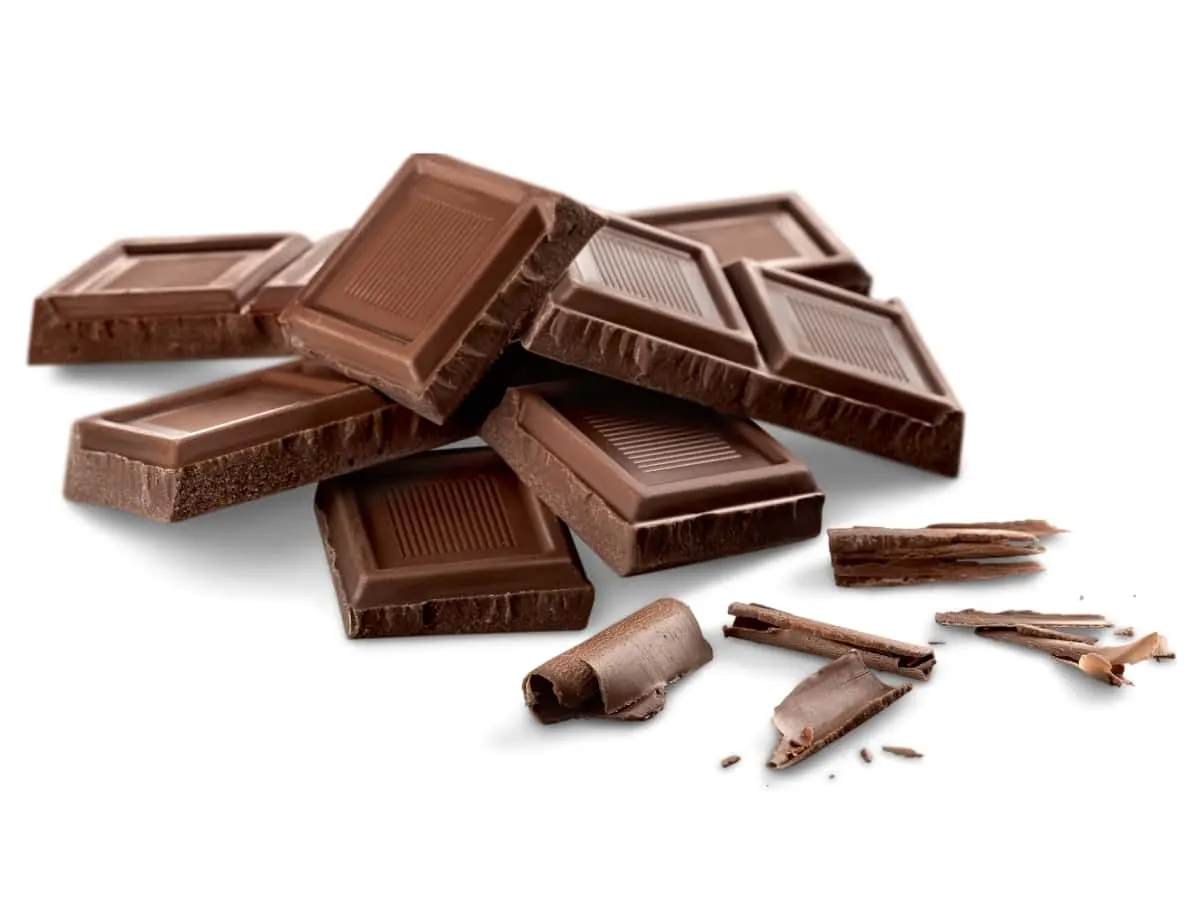As someone who loves chocolate, I always make sure to have it stocked in my fridge. My Labrador is always excited to get a treat whenever I open the door, but I’ve also learned that not all foods are safe for dogs. As a Labrador owner, it’s important to educate yourself on what your dog can and cannot eat. So, can Labradors eat chocolate?
Labradors should not eat chocolate. Chocolate contains theobromine, a compound that is toxic to dogs, and caffeine, which can lead to serious health issues or death in severe cases. Dark and unsweetened versions are the most potent. Toxic effects also depend on the amount consumed and the dog’s size.
To keep your Labrador in good health, it is wise to steer clear of sharing chocolate treats with them and opt for dog-friendly snacks instead. If you are looking for alternative options, this article is for you.
In this article, you will find a plethora of information on Labradors and chocolate, including:
- The amount of chocolate that can be toxic to your dog.
- Symptoms of chocolate poisoning in Labradors.
- Steps to take if your Labrador accidentally ingests some chocolate.
Let’s begin!

Can Chocolate Kill a Labrador?
Chocolate is an incredibly popular treat made from cacao beans and is available in various flavors and types. People all around the world enjoy chocolate for its unique taste and texture. For humans, chocolate can even have some health benefits when consumed in moderation.
However, when it comes to your Labrador, chocolate can be a highly toxic food and even deadly. The main culprit in chocolate that causes harm to Labradors is a chemical compound called theobromine. This substance, which is not a problem for humans, can be extremely harmful to your beloved pet.
The negative impact of theobromine on dogs has been regularly investigated since the 1940s. In this research study involving the impact of theobromine metabolism on various mammalian species, it was observed that it has had significant negative effects on dogs.
But this isn’t it. There’s more!
When your Labrador ingests chocolate, the theobromine can cause a range of health problems. These may include vomiting, diarrhea, increased heart rate, restlessness, muscle tremors, and seizures.
In severe cases, it could lead to heart failure, coma, and even death. The toxicity depends on numerous factors, such as the size of your dog, the type of chocolate ingested, and the amount consumed.
The lethal dose of theobromine for dogs is 100-500 mg/kg. At low doses, there may be only mild symptoms (agitation and vomiting), but at higher doses, there may be fatal cardiotoxic effects. As such, vets treat chocolate poisoning as an emergency.
Here’s a video where a dog fights for its life after consuming chocolate. You should watch it!
Compared to humans, dogs are much more sensitive to theobromine, so even a small amount of chocolate can have serious consequences for your pet. It is important to store chocolate out of reach of your pets.
How Much Chocolate Can Kill a Labrador?
Imagine you suddenly find a chocolate wrapper on the floor, and the chocolate bar is missing from the table. You quickly suspect that your Labrador may have eaten it, and now you’re worrying if it could be fatal for your beloved pet.
The toxicity of chocolate for a Labrador depends on the overall quantity of chocolate consumed, the type of chocolate, and the weight of the dog. Here’s a calculator to help you:
Chocolates and chocolate products that are harmful to a Labrador’s health include:
- Milk Chocolate
- Dark Chocolate
- Baker’s Chocolate
- Cocoa Powder
- Chocolate-flavored snacks
Different types of chocolates have varying levels of toxicity. Here’s a table explaining the potential levels of toxicity:
| Type of Chocolate | Theobromine Content |
|---|---|
| Milk Chocolate | 60mg |
| Dark Chocolate | 300mg |
| Baker’s Chocolate | 450mg |
| White Chocolate | 1mg |
Theobromine is one of the major components responsible for toxicity, along with caffeine. Both substances are part of the methylxanthines family, which causes toxicity. Dark chocolate generally poses a higher risk to Labradors than milk chocolate due to its higher concentration of theobromine.
In fact, the Merck Veterinary Manual states even one ounce of chocolate per body weight can result in poisoning. There have been cases where a dog who ingested a small portion of chocolate has remained safe in the initial few hours and then began facing serious symptoms.
So, what should you do?
“In my experience raising and fostering dogs of varied breeds, say no to chocolate and yes to safe and healthy foods for your Labrador!”

How Long Does it Take for Chocolate to Affect Your Labrador?
Different types of chocolates have varying levels of cacao. Depending on the chocolate type and your dog’s size, the harmful effects may start between 6-12 hours after ingestion.
If your Labrador is less immune, effects are likely to begin earlier. In case of multiple comorbidities, it can turn fatal.
You don’t want to risk the health of your Labrador, do you?
Every chocolate form has a specific impact on dogs based on the level of cacao.
- Milk Chocolate: Contains less cacao, meaning it’s less dangerous but still toxic to Labradors. A small amount may cause mild symptoms, while large amounts can be lethal.
- Dark Chocolate: Has a higher concentration of cacao, making it more toxic to dogs. A small piece is enough to induce serious symptoms.
- White Chocolate: Contains very little cacao. While it’s not advisable to give white chocolate to your dog, accidental ingestion should not lead to significant problems.
- Baker’s Chocolate: Highly toxic to Labradors due to its high cacao concentration. Even a tiny piece can be lethal.
- Cocoa Powder: Extremely toxic as it has the highest amount of cacao. A small dose can lead to severe poisoning.
If at all you’ve found your little giant has consumed a portion, don’t panic!
Regardless of the type, closely monitor them for symptoms like drooling, vomiting, diarrhea, rapid breathing, increased heart rate, or seizures. Remember that it may take 6-12 hours for these symptoms to appear.
Acting promptly is crucial when your dog shows signs of chocolate toxicity. Immediately contact your veterinarian or the Pet Poison Helpline and follow their advice.
Inducing vomiting or administering activated charcoal to absorb the toxins, if instructed by a professional, can help reduce the severity of poisoning.
Pro Tip! As a responsible Labrador owner looking for safe alternatives, opt for dog-friendly treats free of caffeine and theobromine. Many options on the market cater specifically to dogs’ dietary needs and can satisfy their sweet tooth without harmful consequences.
It’s always better to err on the side of caution and stick to dog-safe treats for your furry friend.

Symptoms of Chocolate Poisoning
While most owners know that cacao isn’t healthy for dogs, they lack an understanding of symptoms upon discovering their dog has consumed chocolates.
You should pay attention to these signs because prompt and proper intervention can help save your dog’s life. Here is a list of symptoms you should be aware of:
- Vomiting
- Diarrhea
- Restlessness
- Seizures
- Tremors
- Abnormal heart rate
- Increased urination
- Elevated heart rate
- Collapse
- Hyperactivity
- Depression
- Lethargy
- Hyperthermia
These symptoms can be mild or severe, depending on the amount and type of chocolate consumed.
“Remember, darker chocolate contains higher levels of theobromine and can cause more severe symptoms.”
In extreme cases, chocolate poisoning can be fatal, causing debilitation and cardiorespiratory failure in Labradors.
What To Do if Your Labrador Eats Chocolate
If you discover your Labrador eating chocolate, the first thing you should do is remain calm. I know it’s hard, but it’s mandatory!
Your panic can negatively impact your dog’s environment.
The amount, type of chocolate, and size of your dog all play a role in determining the potential severity of the situation. Remove any remaining chocolate and immediately contact your veterinarian or the Pet Poison Helpline. They can guide you on the next steps based on the specific details of your case.
The key to a successful recovery is timely intervention and follow-up care to avoid complications. Your veterinarian may advise you to induce vomiting to help remove the chocolate from your Labrador’s system.
They could also recommend administering activated charcoal to limit the absorption of theobromine, the toxic substance found in chocolate. A recently published research study has recorded visible success in using activated charcoal to control intoxication.
Taking your Labrador to the vet sooner rather than later is essential in preventing complications and ensuring proper treatment.
Be prepared to provide necessary information such as the type of chocolate ingested, the amount consumed, the approximate time of consumption, and any symptoms displayed by your Labrador. Having this information to hand can expedite the treatment process and help your vet effectively treat your dog.
If your Labrador needs intensive treatment, your veterinarian may utilize IV fluids, medications to control symptoms, and heart monitoring. They may also perform blood tests to monitor the level of theobromine in your dog’s system and ensure proper treatment.
Having pet insurance can be beneficial in such scenarios, as it may help cover the cost of treatment and any necessary tests or medications. Be sure to ask your insurance provider about their coverage for chocolate ingestion emergencies.

Prevention Tips
The best way to prevent your Labrador from eating chocolate is to keep all chocolate and chocolate-containing products out of their reach. This includes not only chocolate bars and candies, but also baked goods, cocoa powder, and chocolate-flavored products like ice cream and yogurt. Make sure to store these items in secure, closed cabinets or high shelves that your Labrador cannot access.
If you have children in the house who may leave chocolate lying around, teach them about the dangers of chocolate for dogs and remind them to keep all chocolate away from your Labrador.
You can also consider using baby gates or a crate to keep your Labrador confined to a safe area when you are not able to supervise them.
FAQs
Can Labradors eat chocolate ice cream?
No, Labradors should never eat chocolate ice cream. Chocolate contains theobromine, a substance that is toxic to dogs, including Labradors. Theobromine can cause vomiting, diarrhea, tremors, seizures, and even death in dogs. It is best to avoid giving your Labrador any chocolate products.
Is milk chocolate less harmful to Labradors?
While milk chocolate contains less theobromine than dark chocolate, it is still harmful to Labradors and should not be given to them. Even small amounts of theobromine can cause negative effects in dogs. It’s better to keep all types of chocolate away from your Labrador.
Is dark chocolate good for dogs?
Dark chocolate is not good for dogs and is even more harmful than milk chocolate due to its higher theobromine content. Remember that any amount of chocolate, including dark chocolate, can be toxic to dogs. Always keep chocolate products out of reach of your pets and consider offering them dog-safe treats instead.
Is white chocolate safe for Labradors?
While white chocolate contains fewer cocoa solids than other types of chocolate, it is still not safe for Labradors to eat. White chocolate contains a high amount of sugar and fat, which can lead to obesity and other health problems if consumed in large amounts. Additionally, white chocolate may contain other ingredients, such as caffeine or theobromine, that can be harmful to dogs.
Related Posts You May Like:


